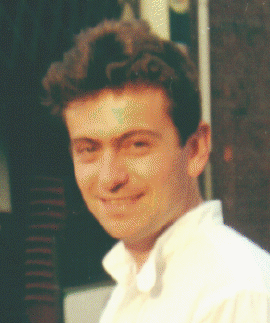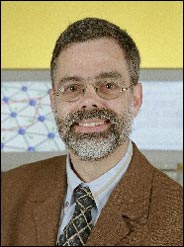
Forschungszentrum Jülich GmbH
Institut für Festkörperforschung
D-52425 Jülich
Germany
![]() +49 2461 61 4210
+49 2461 61 4210
![]() +49 2461 61 2850
+49 2461 61 2850
![]() a.schindlmayr@fz-juelich.de
a.schindlmayr@fz-juelich.de
PROJECTS
Electronic structure and excitation spectra of magnetic materials within first-principles many-body perturbation theory
PRINCIPAL INVESTIGATOR
 |
Dr. Arno
Schindlmayr Forschungszentrum Jülich GmbH Institut für Festkörperforschung D-52425 Jülich |
TOGETHER WITH
 |
Dr. Gustav
Bihlmayer Forschungszentrum Jülich GmbH Institut für Festkörperforschung D-52425 Jülich |
 |
Prof. Dr.
Stefan Blügel Forschungszentrum Jülich GmbH Institut für Festkörperforschung D-52425 Jülich |
ABSTRACT
We develop a computational method based on many-body
perturbation theory to enable first-principles calculations of
the electronic structure and excitation spectra of magnetic
materials. To this effect we extend the GW approximation for the
electronic self-energy to take the spin polarisation of the
electron system into account. At this level the self-energy is
still calculated separately for each spin channel. As a major
goal, we then treat possible spin-flip processes by including
appropriate vertex corrections in the form of a scattering matrix
that couples the two spin channels. The implementation is based
on an all-electron approach and avoids the use of
pseudopotentials. Key quantities that can be obtained with this
method are the quasiparticle band structure, including the
exchange splitting between the two spin channels, as well as the
spectral function, which in addition to the main quasi-particle
peaks also shows additional collective excitations in the form of
satellite resonances. The lifetime of the excitations can be
obtained from the imaginary part of the complex quasi-particle
energies. The theoretical approach is universal and can be
applied to magnetic bulk materials, surfaces and nanostructures
if spin polarisation plays an important role.